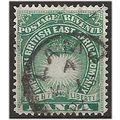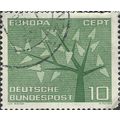Hemingford Grey, Cambridgeshire - House, Study Centre - postcard c.1970s
- Condition : Used
- Dispatch : 2 Days
- Brand : None
- ID# : 184386154
- Quantity : 1 item
- Views : 748
- Location : United Kingdom

- Seller : justthebook (+1713)
- Barcode : None
- Start : Sat 24 Aug 2019 05:50:43 (EDT)
- Close : Run Until Sold
- Remain : Run Until Sold
Checks/Cheques
 for 1 item(s) edit
for 1 item(s) edit
Shipping Calculator
More Listings from This Seller view all
Seller's Description
- Postcard
- Picture / Image: The Study Centre, Hemingford Grey House [Cambidgeshire]
- Publisher: Photo Precision (R5351)
- Postally used: no
- Stamp: n/a
- Postmark(s): n/a
- Sent to: n/a
- Notes / condition:
Please ask if you need any other information and I will do the best I can to answer.
Image may be low res for illustrative purposes - if you need a higher definition image then please contact me and I may be able to send one. No cards have been trimmed (unless stated).
------------------------------------------------
Postage & Packing:
Postage and packing charge should be showing for your location (contact if not sure).
No additional charges for more than one postcard. You can buy as many postcards from me as you like and you will just pay the fee above once. Please wait for combined invoice. (If buying postcards with other things such as books, please contact or wait for invoice before paying).
Payment Methods:
UK - PayPal, Cheque (from UK bank) or postal order
Outside UK: PayPal ONLY (unless otherwise stated) please. NO non-UK currency checks or money orders (sorry).
NOTE: All postcards are sent in brand new stiffened envelopes which I have bought for the task. These are specially made to protect postcards and you may be able to re-use them. In addition there are other costs to sending so the above charge is not just for the stamp!
I will give a full refund if you are not fully satisfied with the postcard.
----------------------------------------------
Text from the free encyclopedia WIKIPEDIA may appear below to give a little background information (internal links may not work) :
*************
Hemingford Grey is a village and civil parish in Cambridgeshire, England.[2] Hemingford Grey lies approximately 4 miles (6 km) east of Huntingdon. Hemingford Grey is situated within Huntingdonshire which is a non-metropolitan district of Cambridgeshire as well as being a historic county of England.
In Anglo-Saxon times the neighbouring villages of Hemingford Grey and Hemingford Abbots were a single estate. In the ninth century they were split into two. In 1066 "Little Hemingford", as it was known, was acquired by nearby Ramsey Abbey.
Hemingford Grey was listed in the Domesday Book in the Hundred of Toseland in Huntingdonshire; the name of the settlement was written as alia Emingeforde and Emingeforde in the Domesday Book.[3] In 1086 there were three manors at Hemingford Grey; the annual rent paid to the lords of the manors in 1066 had been £17 and the rent had fallen to £16 in 1086.[4]
The Domesday Book does not explicitly detail the population of a place but it records that there were 29 households at Hemingford Grey.[4] There is no consensus about the average size of a household at that time; estimates range from 3.5 to 5.0 people per household.[5] Using these figures then an estimate of the population of Hemingford Grey in 1086 is that it was within the range of 101 and 145 people.
The Domesday Book uses a number of units of measure for areas of land that are now unfamiliar terms, such as hidesand ploughlands. In different parts of the country, these were terms for the area of land that a team of eight oxen could plough in a single season and are equivalent to 120 acres (49 hectares); this was the amount of land that was considered to be sufficient to support a single family. By 1086, the hide had become a unit of tax assessment rather than an actual land area; a hide was the amount of land that could be assessed as £1 for tax purposes. The survey records that there were 12.25 ploughlands at Hemingford Grey in 1086 and that there was the capacity for a further 2.75 ploughlands.[4] In addition to the arable land, there was 90 acres (36 hectares) of meadows, two water mills and a fishery at Hemingford Grey.[4]
The tax assessment in the Domesday Book was known as geld or danegeld and was a type of land-tax based on the hide or ploughland. It was originally a way of collecting a tribute to pay off the Danes when they attacked England, and was only levied when necessary. Following the Norman Conquest, the geld was used to raise money for the King and to pay for continental wars; by 1130, the geld was being collected annually. Having determined the value of a manor's land and other assets, a tax of so many shillings and pence per pound of value would be levied on the land holder. While this was typically two shillings in the pound the amount did vary; for example, in 1084 it was as high as six shillings in the pound. For the manors at Hemingford Grey the total tax assessed was 20 geld.[4]
In around 1140 Payn of Hemingford began the construction of Hemingford Manor, one of the oldest inhabited buildings in England, as well as the present church. The manor was then owned by the Turberville family who for a while gave their name to the village.[6][7]
In 1276 the village was given its present name by the de Grey family. The manor remained in the possession of the Greys until seized by Henry VII in the fifteenth century after George Grey, 2nd Earl of Kent was unable to settle his debts. The manor was subsequently leased to a number of people, including the great-grandfather of Oliver Cromwell.
Listed as Emingeforde in the Domesday Book, the name Hemingford means "the ford of the people of Hemma or Hemmi", where Hemma is believed to be the name of a Saxon chief.[6] The village was at different times known as East Hemingeford (11th century), Hamicheford (12th), Hemmingeforde Turbervill (13th–14th), Hemmingeforde Parva (13th–14th) and Hemingford Priors (14th–15th).[7]
Hemingford Grey grew considerably in the 19th century especially in the area of the London Road which is about a mile east of the village centre and nearer to St Ives. Here there has been some industrial development, a petrol station and the St Ives Motel. The village continued to grow between the wars when simple and attractive bungalows with good–sized gardens were built followed, in more recent years, by several small estate developments.
Listing Information
| Listing Type | Gallery Listing |
| Listing ID# | 184386154 |
| Start Time | Sat 24 Aug 2019 05:50:43 (EDT) |
| Close Time | Run Until Sold |
| Starting Bid | Fixed Price (no bidding) |
| Item Condition | Used |
| Bids | 0 |
| Views | 748 |
| Dispatch Time | 2 Days |
| Quantity | 1 |
| Location | United Kingdom |
| Auto Extend | No |





















